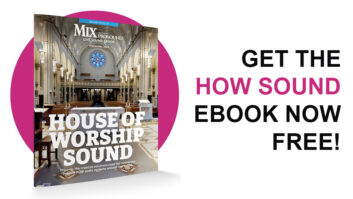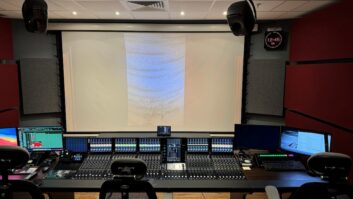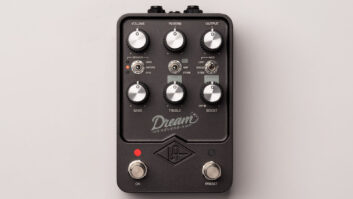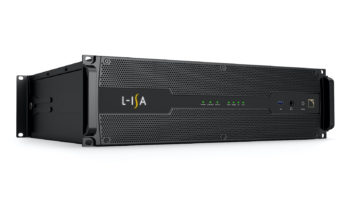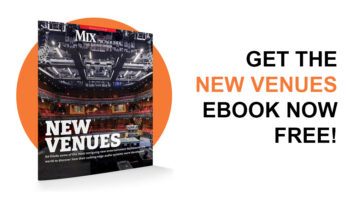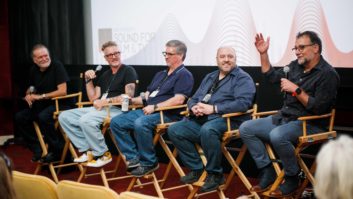As part of a major overhaul of its technical facilities, the Royal Opera House in London’s Covent Garden has installed Prism Sound Dream ADA-128 multichannel converters to handle analogue to digital conversion across its entire audio workflow. A total of seven Dream ADA-128 units are now up and running on the Royal Opera House’s new Dante network, with an eighth unit on order for later in the year.
Daniel Arif, Sound, Video and Broadcast Project Coordinator for the Royal Opera House (ROH), says: “I looked at numerous different audio converters but chose Prism Sound because the Dream ADA-128 had none of the shortfalls I was finding with other products. It delivers exceptional sound quality; it integrates well with our other equipment; it has plenty of inputs, and it doesn’t take up a lot of rack space. In short, these units do exactly what we want them to do, and we are very happy with them.”
The need to upgrade the ROH’s facilities was identified shortly before the Covid pandemic when the ROH Board commissioned a health survey of the entire building. This highlighted various shortcomings and budget was allocated to resolve them.
“No major work had been carried out at ROH since the mid-1990s and the survey clearly indicated that many parts of the building – from the technical infrastructure through to the back of house areas – were not where they should be,” Arif says. “Work needed to be done to bring everything up to standard.”
As one might expect from a venue the size of the Royal Opera House, there is a massive amount of infrastructure to be considered. On the technical side, Arif says the obvious place to start was the existing sound studio because it could be remodeled quickly without impacting the rest of the building.
“Although the sound studio picks up audio from various places in the building, the room itself and the equipment in it is self-contained,” Arif explains. “For this reason, we knew that the studio was the ideal place to start as it would give us a good indication of what could be done elsewhere.”
Originally built in 2004 when the Royal Opera House began broadcasting performances live to cinemas across the UK and Europe, the studio is also used to capture audio for CD and DVD release. Prior to the refit it contained a Studer console and 5.1 monitoring and, in terms of workflow, behaved very much like a traditional broadcast studio.
During the refit, which involved Munro Acoustics improving the acoustics and making the space much more comfortable for ROH staff, Arif and his team overhauled the entire equipment list to change and improve the workflow.
“A lot of our material is mixed by freelance engineers who like to edit in their own studios, which could be anywhere in the country,” Arif says. “They wanted us to make it easier to move recordings around, so to accommodate that we decided to move to an ‘in the box’ workflow using Pro Tools and Pyramix. This meant changing the console as a traditional broadcast desk was no longer suited to that style of working. Our solution was to invest in an Avid control surface, along with two Macs that run simultaneously as our main and redundant systems.”
Once the decision to go fully digital was made, Arif began looking at I/O and working out how to link up with the multitude of microphones that are used during each performance. A large number of inputs was vital – Arif specified 128 – as was rack space because the ROH studio has a relatively small machine room.
“It was at this point that I began advocating for the Prism Sound Dream ADA-128,” he says. “I’d used Prism Sound converters while working at Abbey Road and had always loved their audio quality. When I saw an online demo for the ADA-128 I realized it was ideal for our needs and arranged a meeting with Prism Sound’s managing director, Jody Thorne.”
Due to unavoidable manufacturing delays, Dante cards for the new ADA-128 units were late shipping so Prism Sound set ROH up with a temporary solution involving its Atlas audio interfaces. Once the Dante cards were delivered, ROH switched to Dream ADA-128 units and is now using them to handle all Dante to Pro Tools conversion.
“We are still using Atlas interfaces to connect our analogue microphones, but when the ADA-128 Mic cards become available we will be doing everything though the new units,” Arif adds.
At present three ADA-128s are housed in the studio’s machine room, which handles 128 microphone inputs from the orchestra pit and stage. Another ADA-128 is in a rack room on the seventh floor where it handles microphones rigged in the opera house’s ceiling and all the amplifiers for the Front of House PA.
“We also have another ADA-128 in a flight case on wheels, which we use for concerts that have awkward staging,” Arif says. “Our sixth unit is in the ballet studio, a small theatre where we record Insight events for You Tube. Finally, we have a seventh unit that is used for mass audio distribution.”
“The Dream ADA-128 is the only thing that comes close to doing everything we need,” Arif says. “I/O from FOH and for our broadcast networks is shared through our Dante system and we can switch things around as and when we need to. We recently installed a new Yamaha FOH sound desk and we have locked down the gains on that and the Prism Sound units so that no one can touch them. If anything needs adjusting it can be done digitally at destination.”
Upgrading the sound studio and installing the new Dante network took just two months, from July to September 2023. At the same time the new FOH sound desk was installed and linked to the Dante network, which is working perfectly.
“We still have a massive analogue infrastructure that runs alongside our new digital set-up, but the whole point of these upgrades is to move to fully digital in the future,” Arif says. “The goal is to save time, deliver workflow efficiencies by creating presets for certain shows, and make the entire system easier to navigate. This is important because the ROH is a busy and important venue, and we need it to be futureproof.”
Prism Sound is now working closely with the Royal Opera House to develop new features for the Dream ADA-128 that will specifically benefit the live sound market.
“Most sound engineers associate Prism Sound with recording studios and don’t initially realise what this unit can deliver,” Arif says. “The fact is that live sound and performance venues such as the ROH want and need high density interfaces, which is what you get with an ADA-128. We couldn’t be happier with our choice of converter, or with the service and instant back up we get from Prism Sound. We are happy to test new features for them because we like building relationships with the companies we work with.”
-ends-
About Prism Sound
Founded in 1987, Prism Sound manufacture professional digital audio equipment for the international broadcast, film and music production sectors. The company’s products are renowned for their exceptional audio quality and are the converters and interfaces of choice for many of the world’s top artists, producers, composers, mixing and mastering engineers. They are also the mainstay of many internationally acclaimed audio facilities including Metropolis Studios, Sony, ESPN, the Library of Congress and Walt Disney. Prism Sound also produces SADiE audio production workstation software, which is used by major national broadcasters such as the BBC and Radio France, as well as many of the world’s leading mastering houses and classical and live music recording engineers.
For more information: www.prismsound.com
